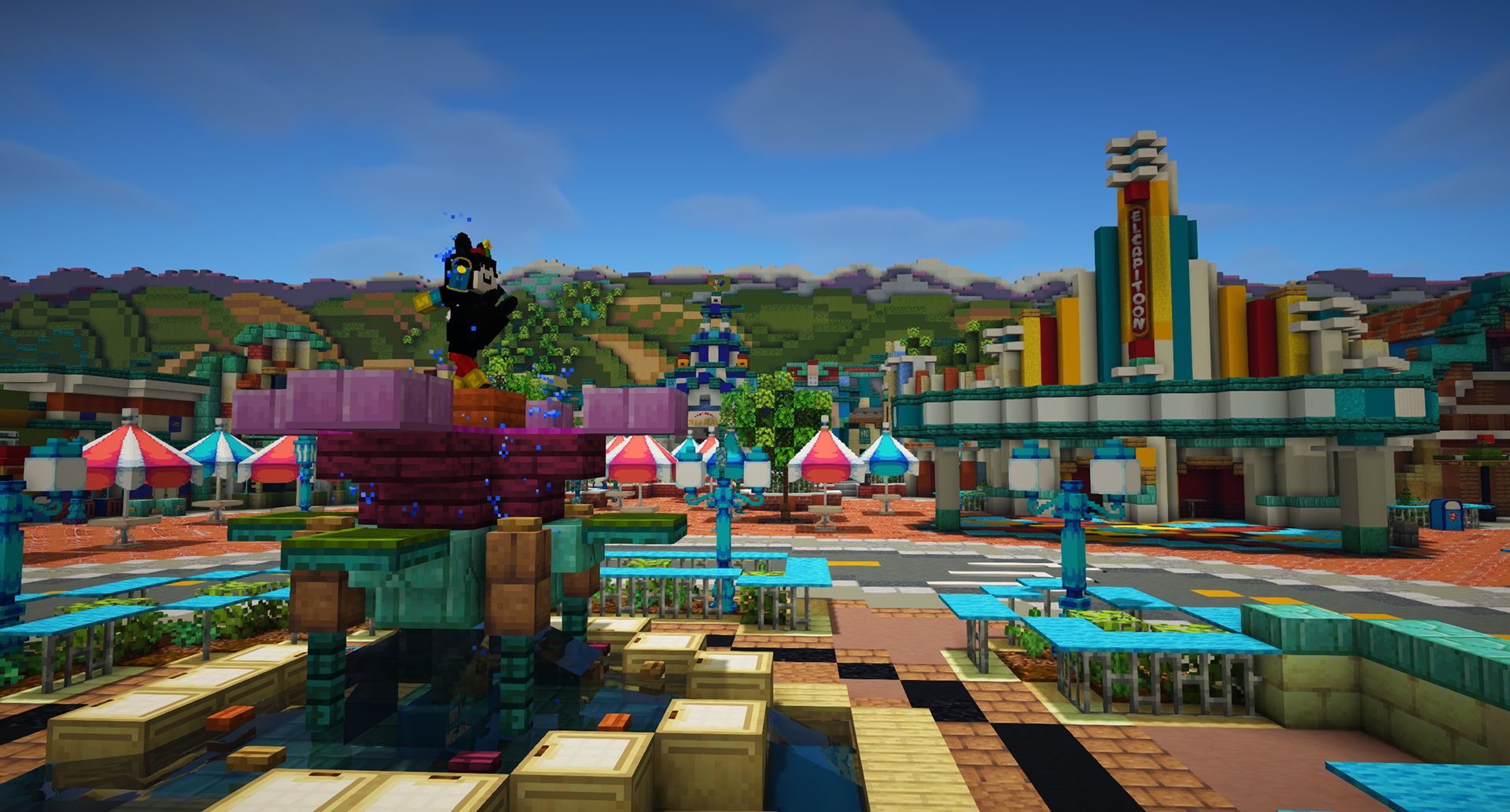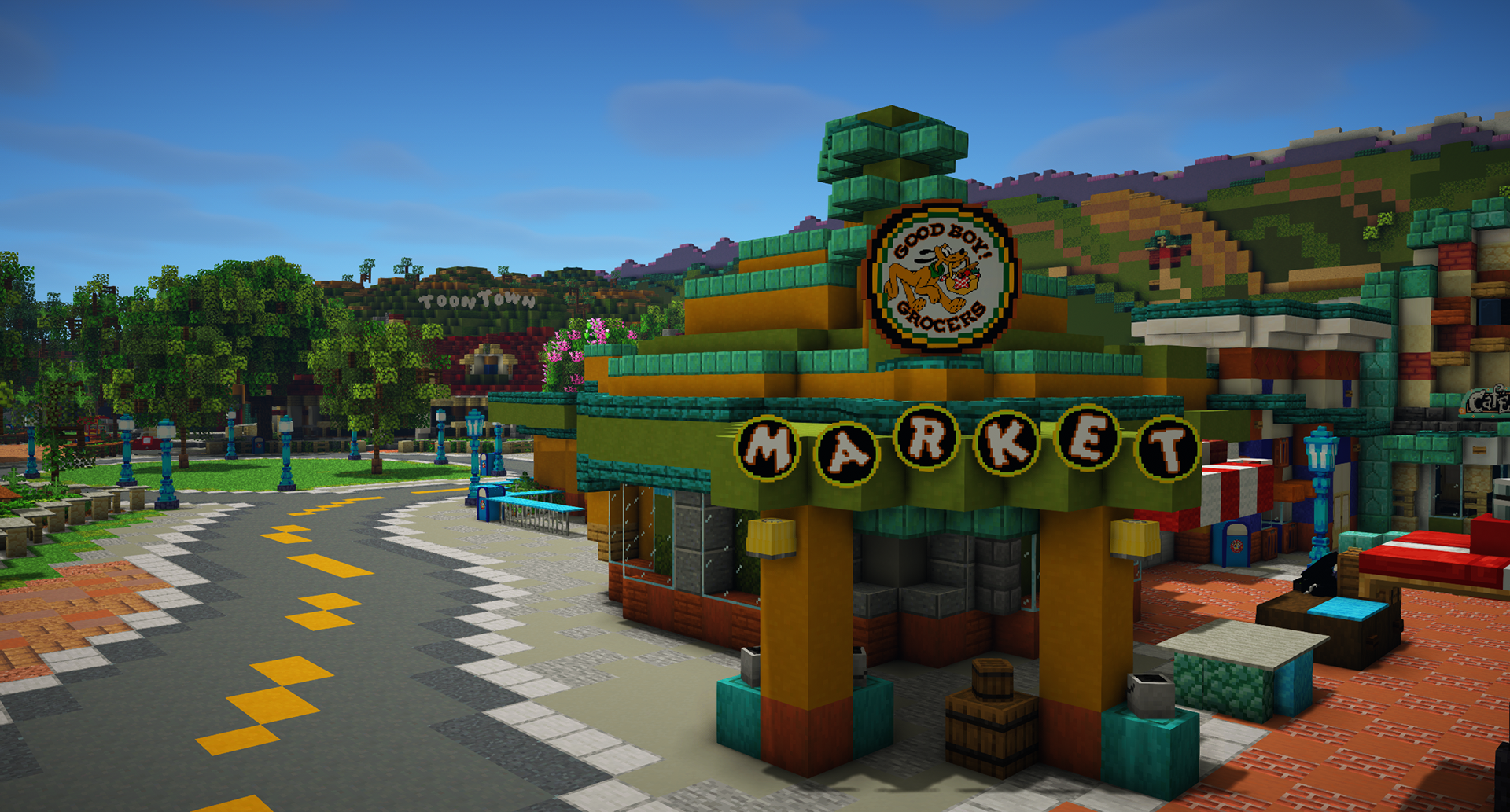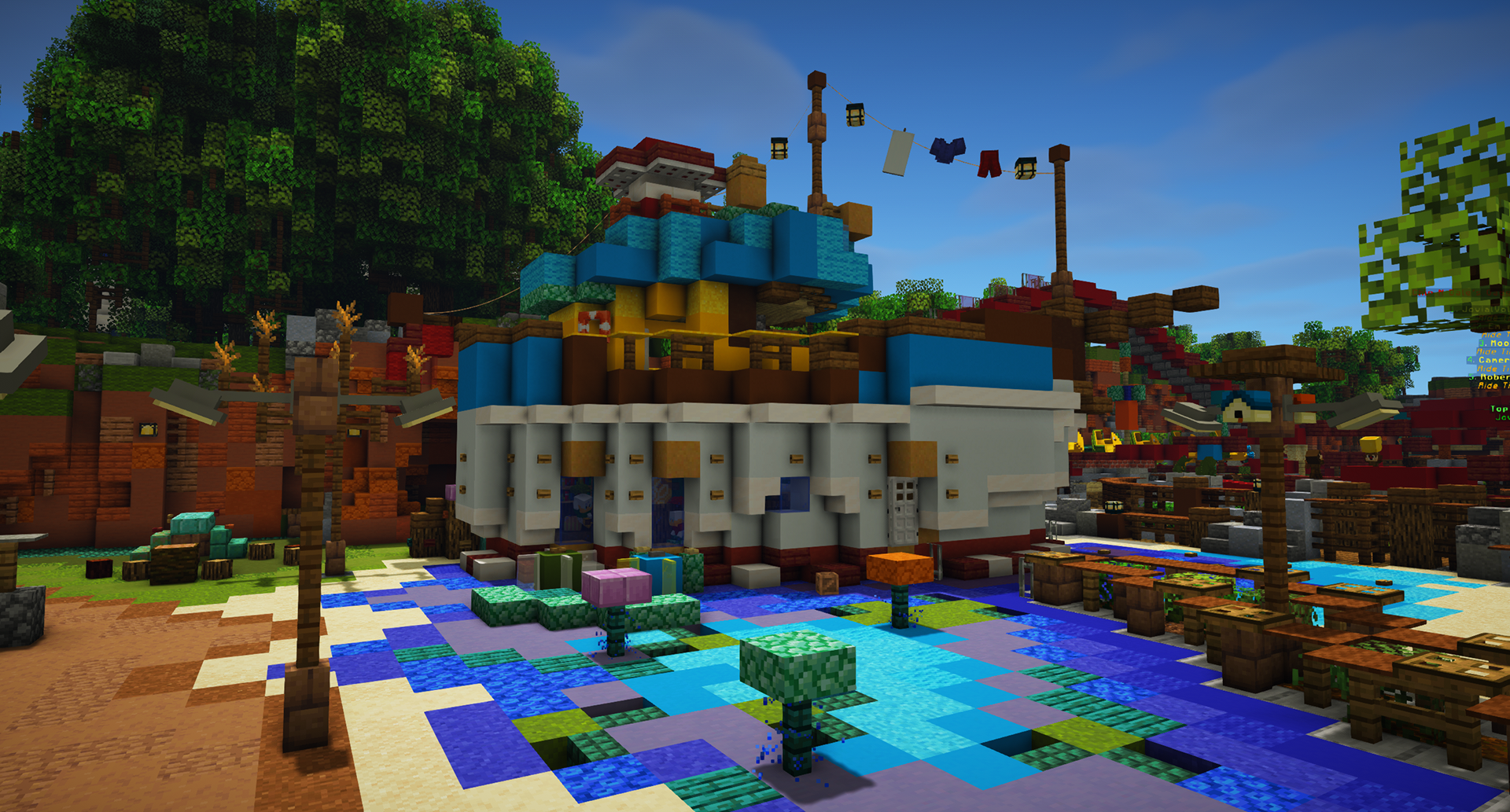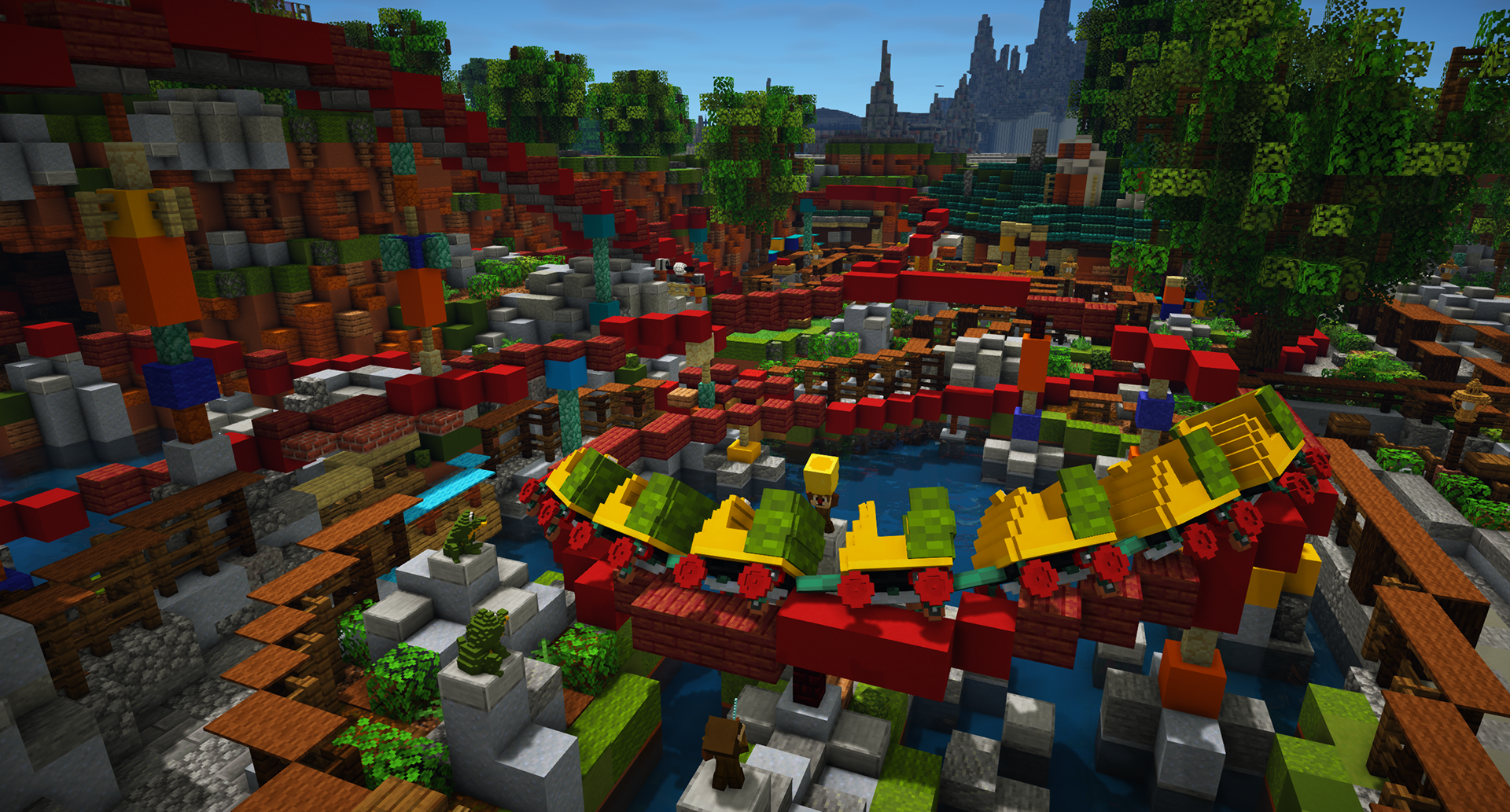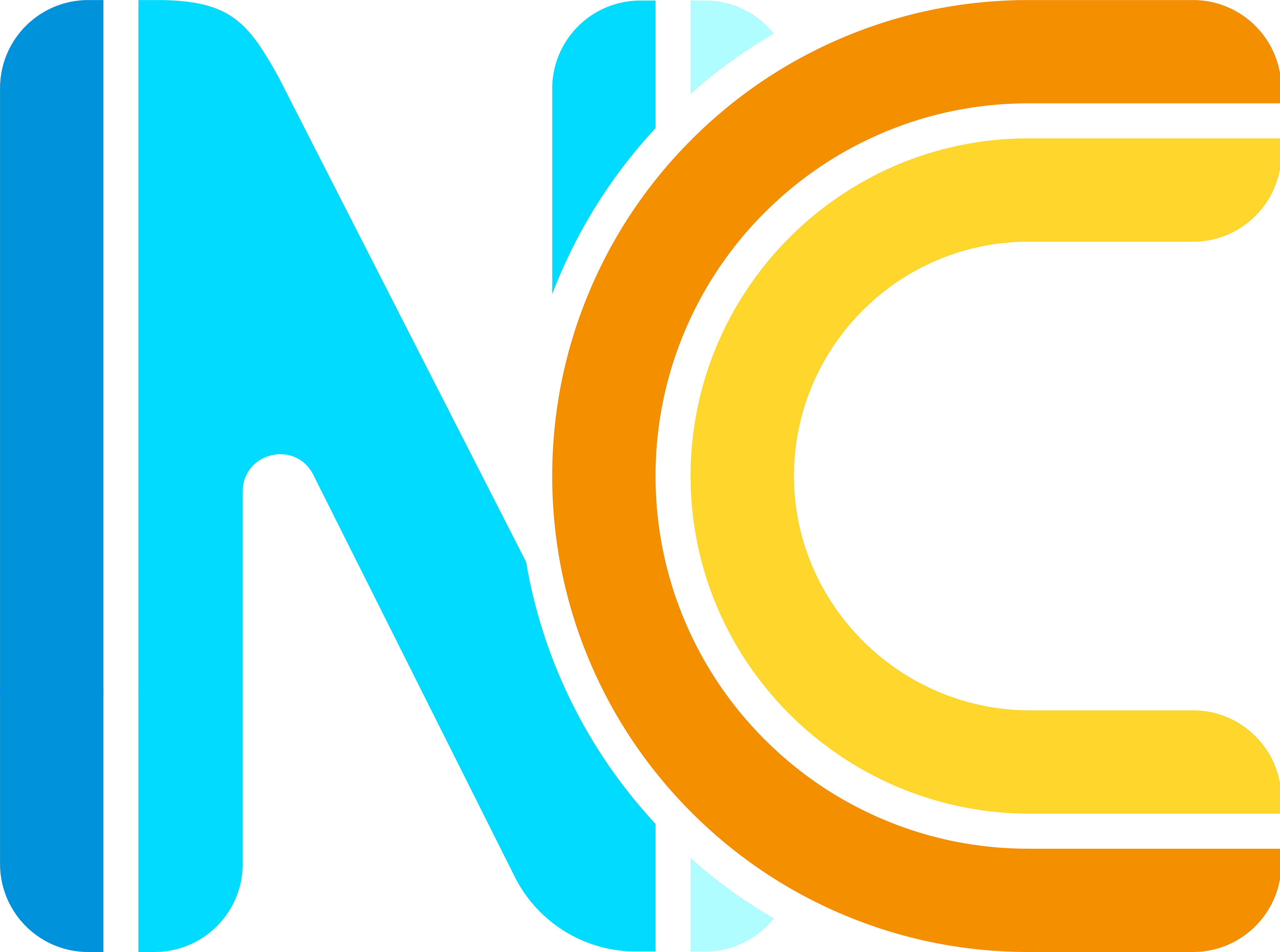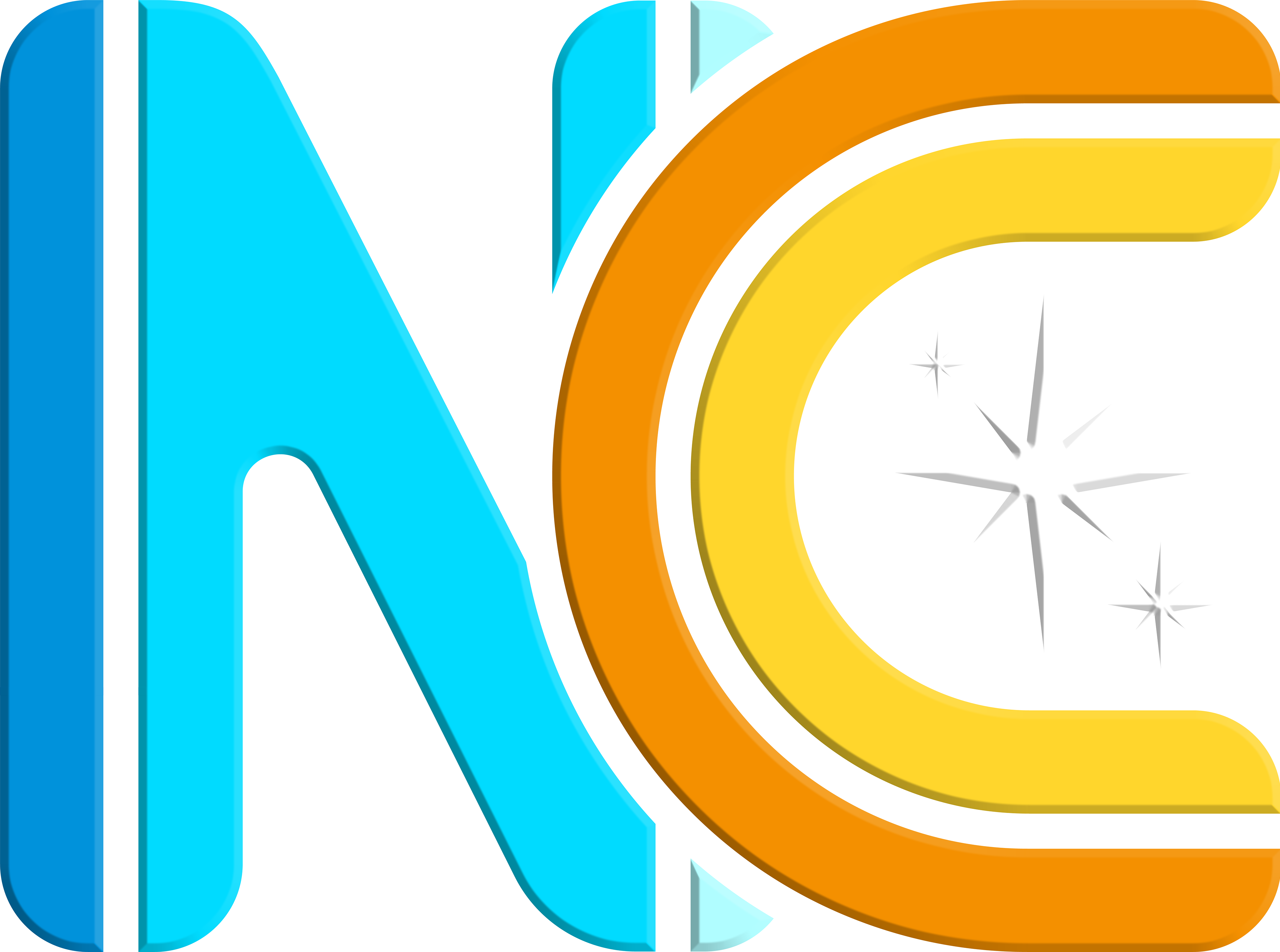Building Disneyland in Minecraft sounds like an easy feat in theory, but is a very complicated process. Minecraft has many limitations, the most obvious being that it's completely limited to block placement. There are ways around this- for example, you can import 3D models into Minecraft and place them in any orientation you desire. However, the process is tedious and also limited, so 3D models can only be used sparingly in the park builds for a seamless art direction. Below I've used our recreation of Mickey's Toontown to give some insight into our process while building.
When building a new area, we always start from an aerial view. This way, we can mark out the exact outlines of shops, show buildings, and pathways. Using Google Earth, we can also achieve accurate altitude measurements for when pathways move up or down. The first pass of the land is often colored blocks we use as line tools and placeholders. We use physical rulers and protractors to measure the angles of lines that mark the storefronts and pathways, then use a non-skewed satellite image to size it out properly.
Often when creating any form of rockwork or rough textured surface, we use a placeholder color that wouldn't otherwise be found in the direct area nearby. That way, we could use built-in plugin to swiftly texture a selected region of that color into the texture we desire. When it came to Gadget's Go Coaster, the rockwork that surrounds the coasters forming the rocky hills of Toontown used a similar method.
Often when creating any form of rockwork or rough textured surface, we use a placeholder color that wouldn't otherwise be found in the direct area nearby. That way, we could use built-in plugin to swiftly texture a selected region of that color into the texture we desire. When it came to Gadget's Go Coaster, the rockwork that surrounds the coasters forming the rocky hills of Toontown used a similar method.
Foliage consists of various leaf blocks as well as smaller texture "skull" blocks that are overlayed with a leaf texture in order to create the smaller bushes and define the trees better. There are other types of ground covering as well, however, a common one being gravel underneath roller coaster tracks. These details have to be noticed and recreated as closely as possible. We took notice of the shape of rocks and foliage that surrounded guests in order to provide the most accurate sightlines and experiences. Below are a few images of Toontown closer to opening day.
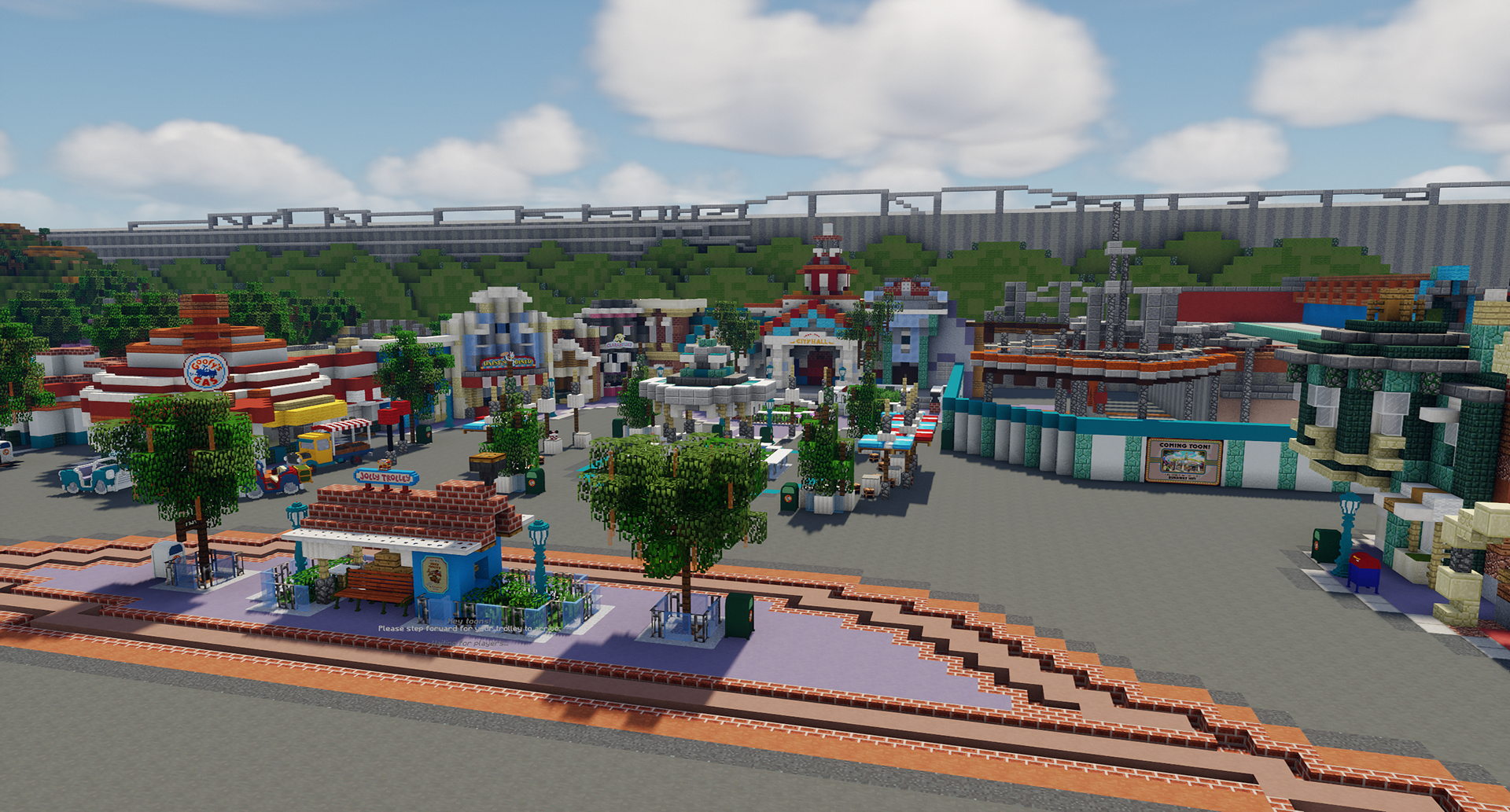

Below are images of Toontown once we revamped it in 2023 to bring the fresh new park-like atmosphere to the area.
